Abstract
A treatment program designed to increase the percentage of negative urine tests was implemented using a multiple-baseline across groups design in a sample of 19 families of children with insulin dependent diabetes. The treatment involved instruction in insulin adjustment, decrease in intake of simple sugars and saturated fats, and increase in exercise, along with teaching the parents to support improvements in children's self-regulatory behaviors using a point economy and praise. New procedures designed to measure and reinforce adherence to the urine testing regimen were developed. Results showed significant increases in percentage of negative urines consistent with implementation of treatment across the three treatment groups, which were maintained over the follow-up period. Metabolic measures of control, including glycosylated hemoglobin and serum glucose did not show improvements even though the relationship between the percentage of negative urine tests and glycosylated hemoglobin was very high during treatment.
Full text
PDF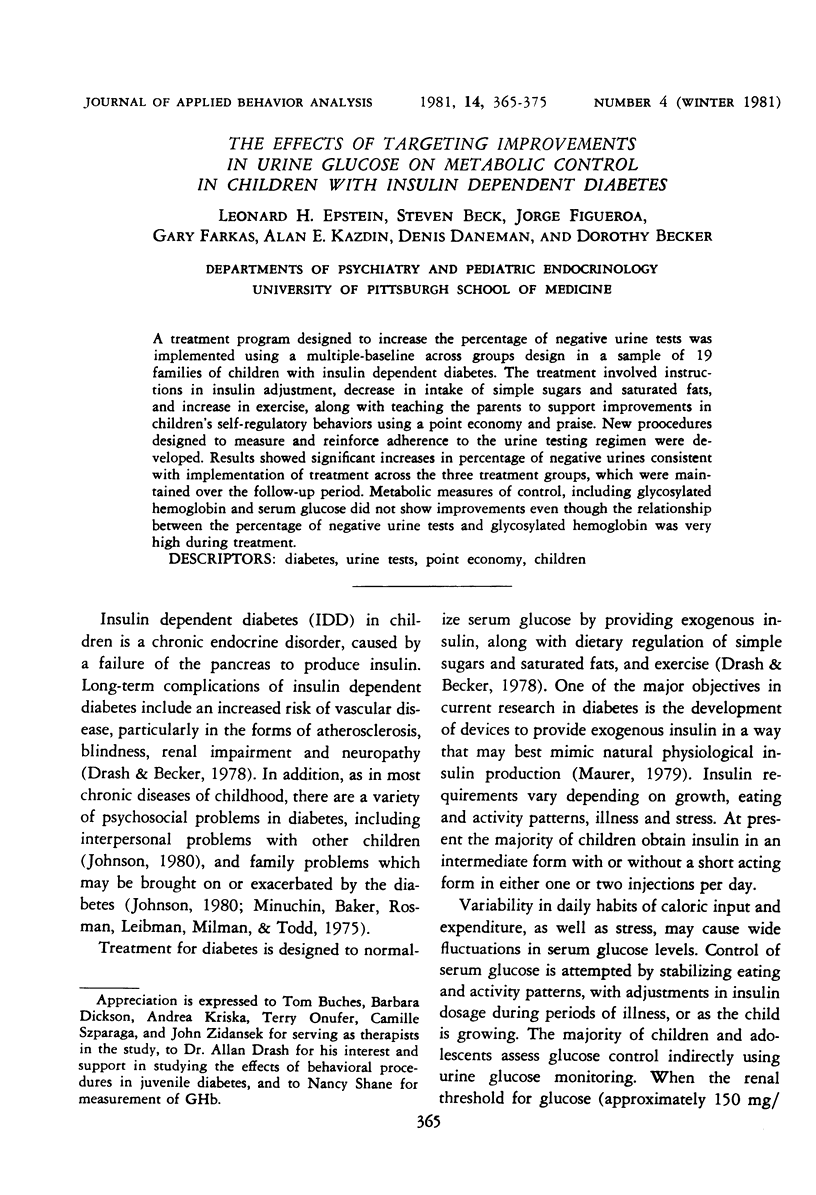
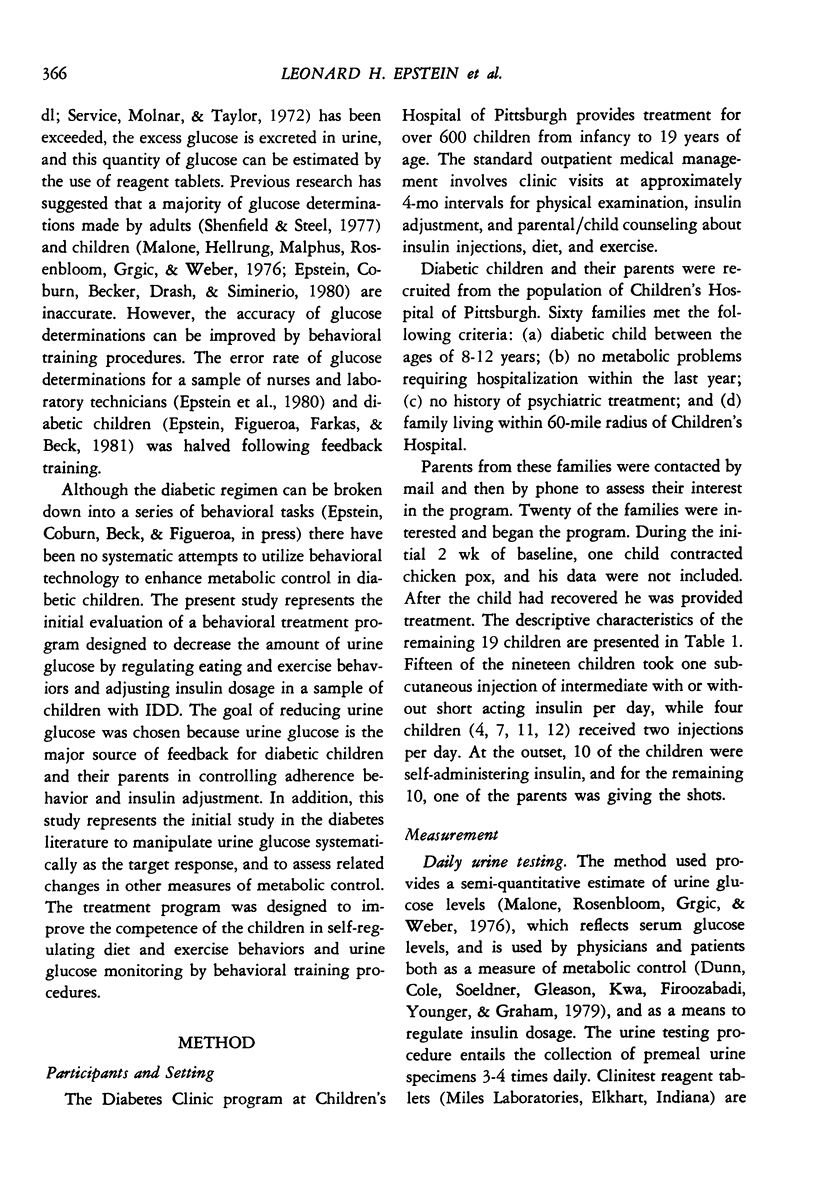
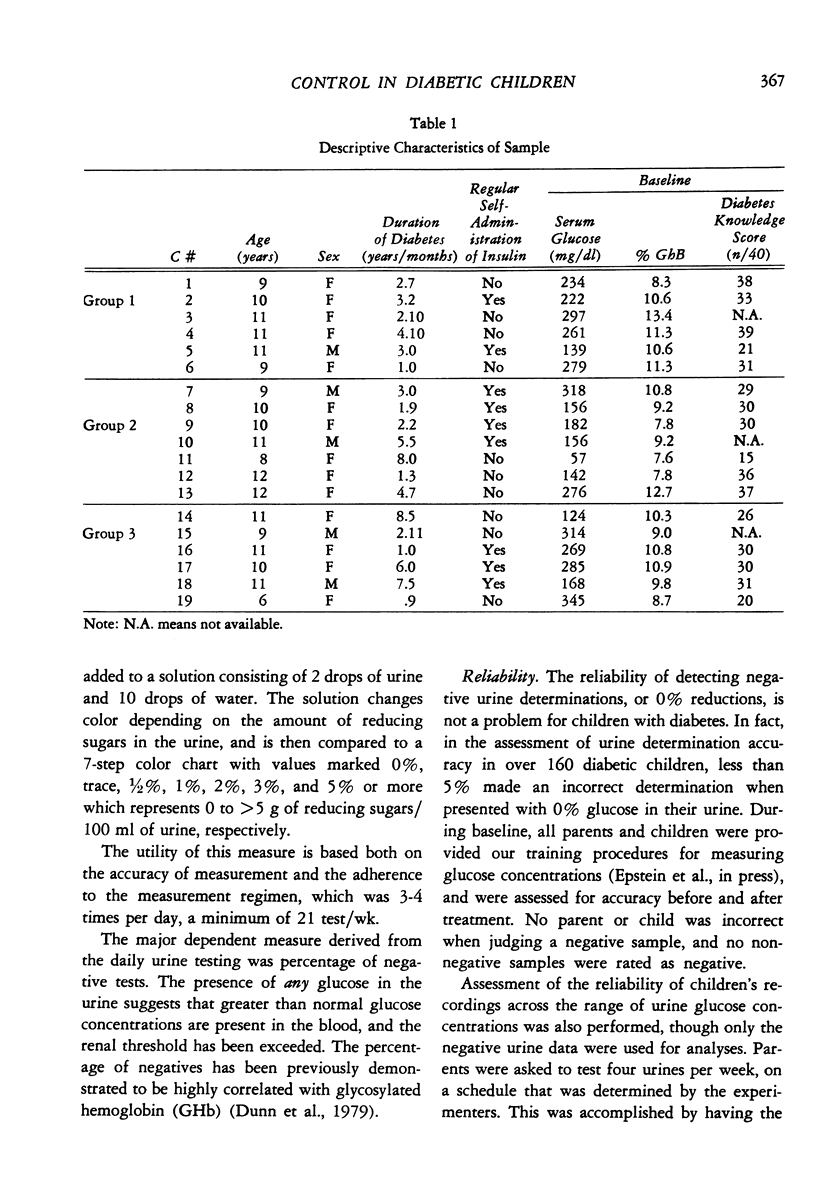
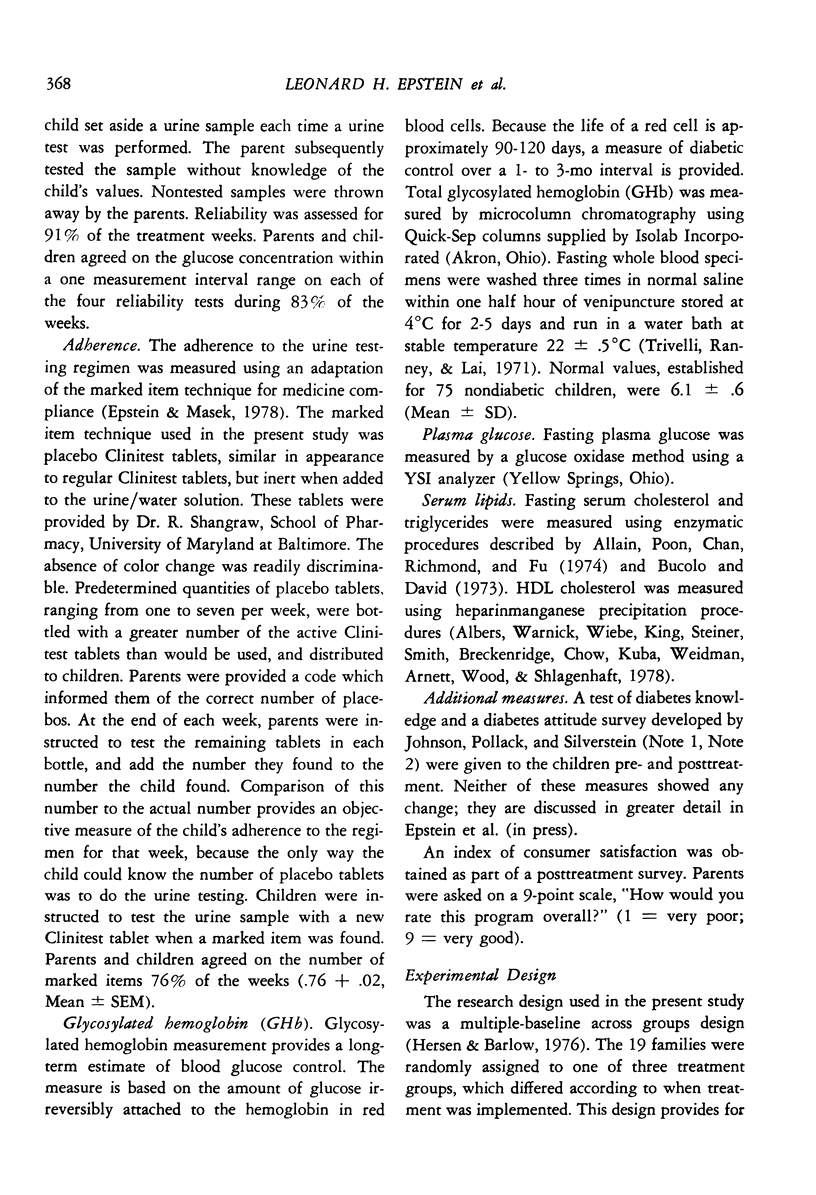

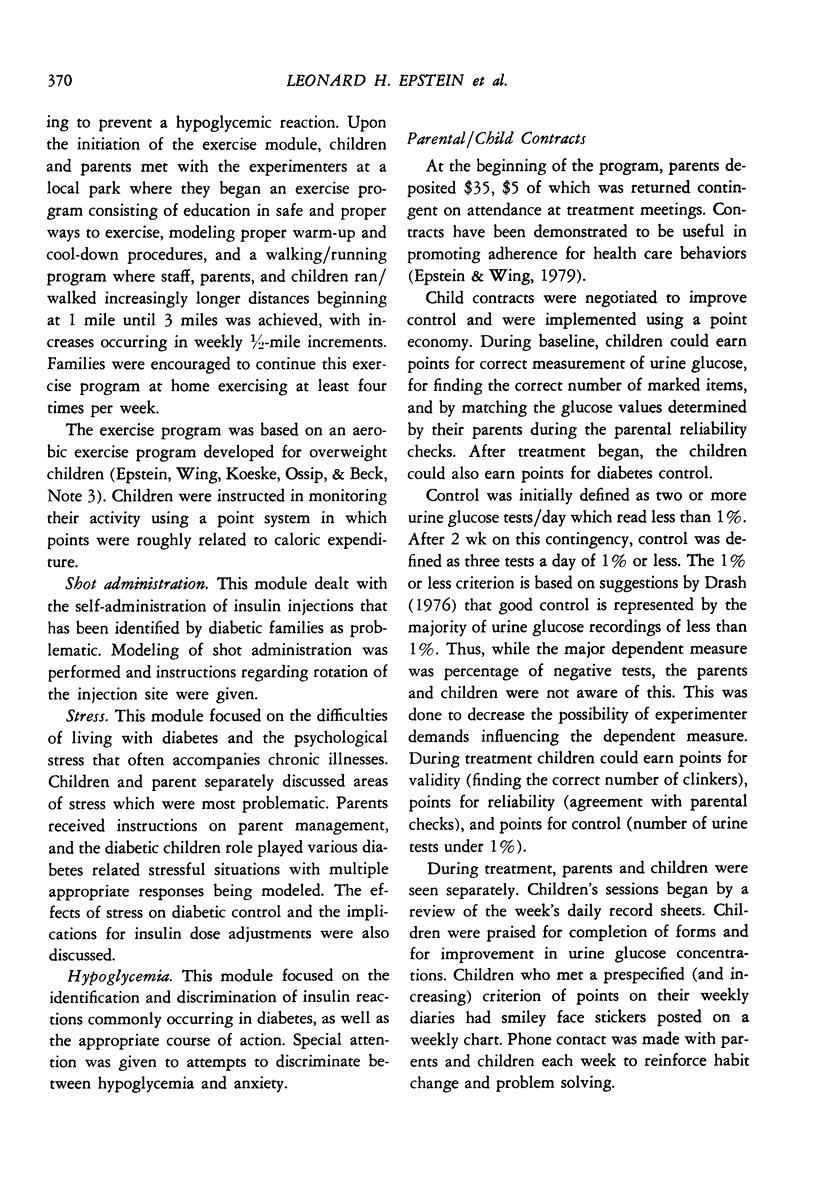

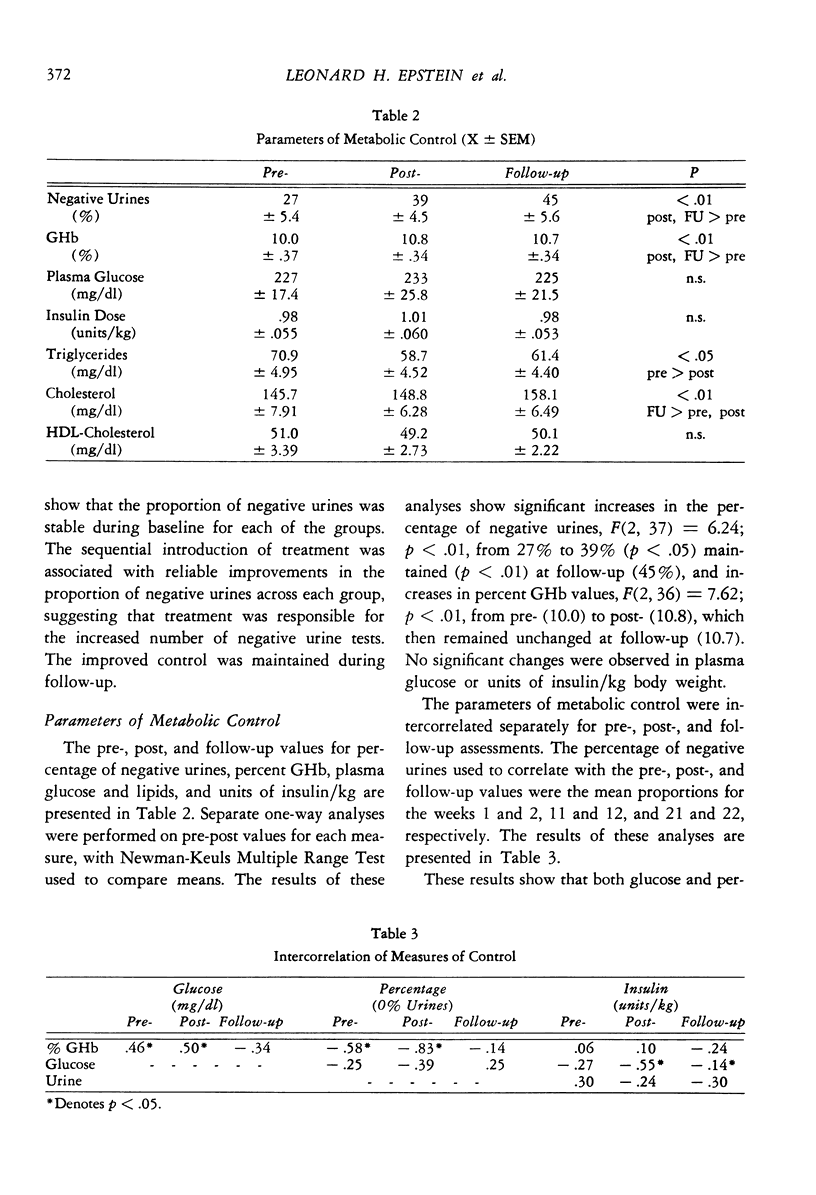
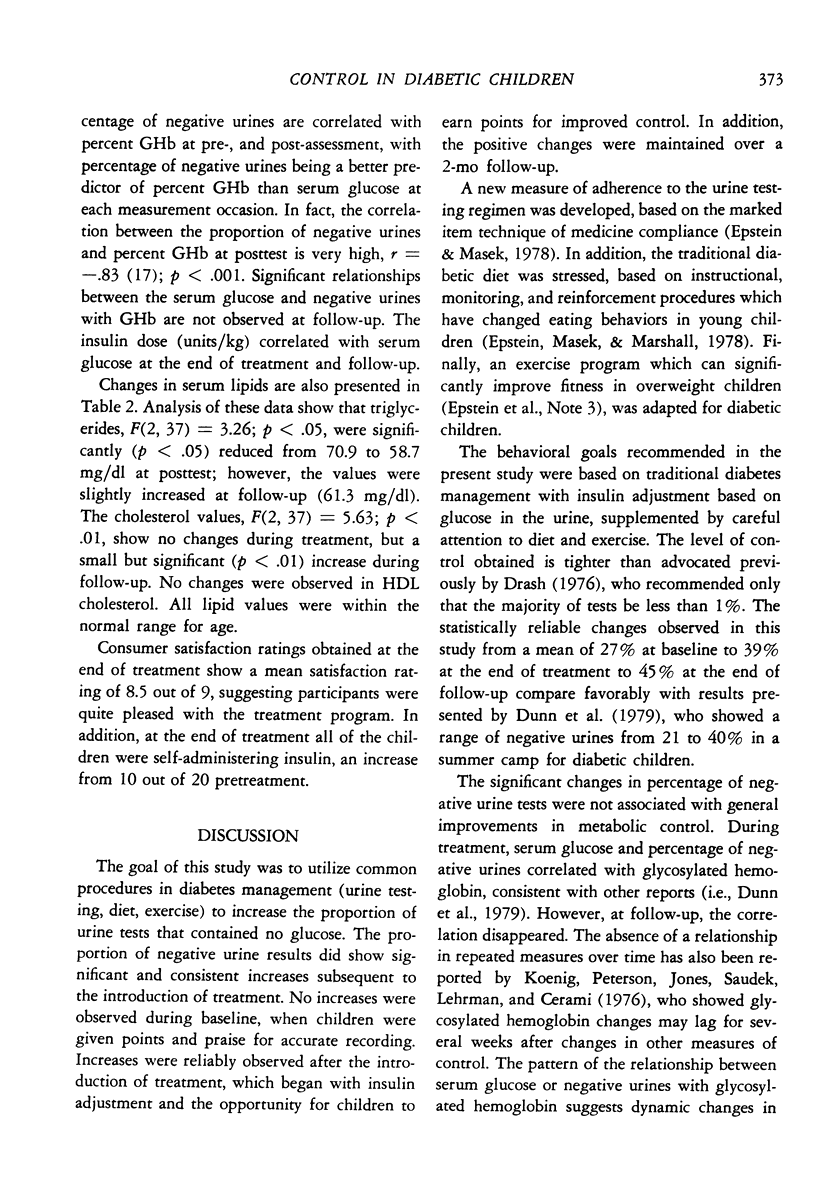
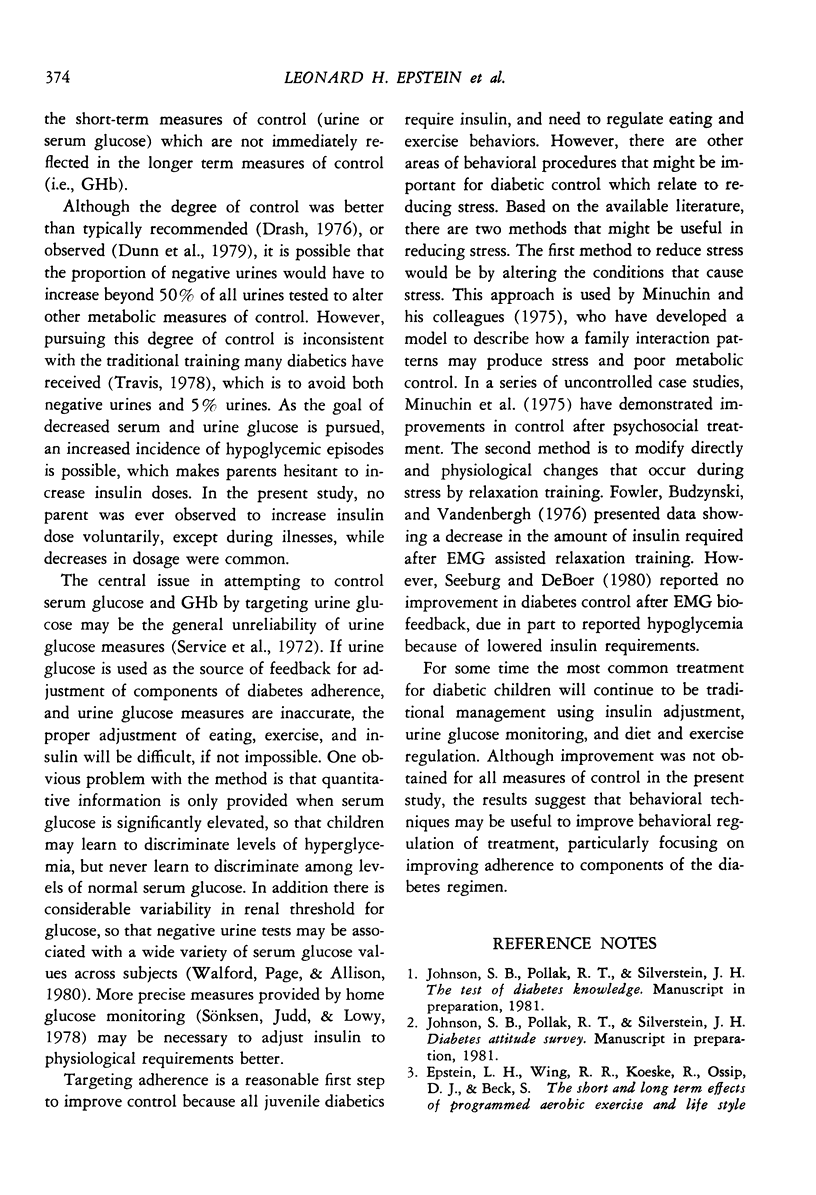
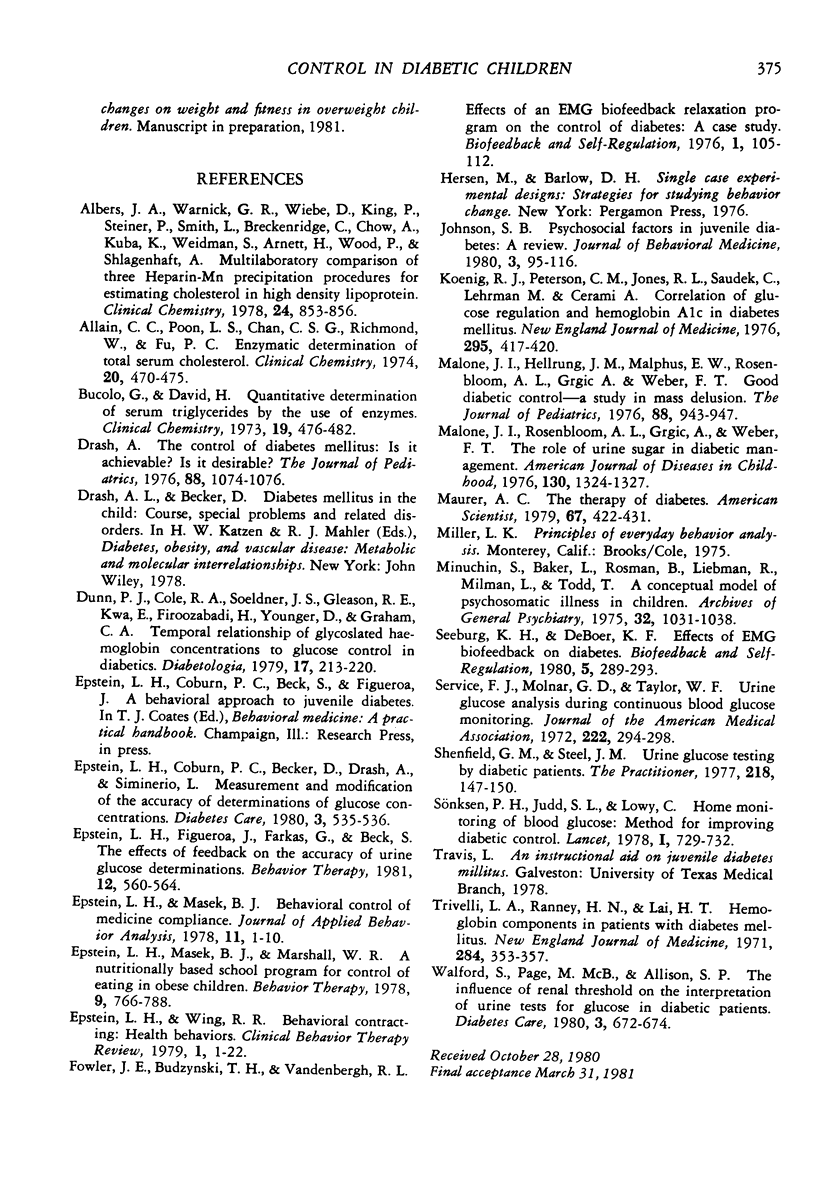
Selected References
These references are in PubMed. This may not be the complete list of references from this article.
- Albers J. J., Warnick G. R., Wiebe D., King P., Steiner P., Smith L., Breckenridge C., Chow A., Kuba K., Weidman S. Multi-laboratory comparison of three heparin-Mn2+ precipitation procedures for estimating cholesterol in high-density lipoprotein. Clin Chem. 1978 Jun;24(6):853–856. [PubMed] [Google Scholar]
- Allain C. C., Poon L. S., Chan C. S., Richmond W., Fu P. C. Enzymatic determination of total serum cholesterol. Clin Chem. 1974 Apr;20(4):470–475. [PubMed] [Google Scholar]
- Bucolo G., David H. Quantitative determination of serum triglycerides by the use of enzymes. Clin Chem. 1973 May;19(5):476–482. [PubMed] [Google Scholar]
- Drash A. The control of diabetes mellitus: is it achievable? Is it desirable? J Pediatr. 1976 Jun;88(6):1074–1076. doi: 10.1016/s0022-3476(76)81104-3. [DOI] [PubMed] [Google Scholar]
- Dunn P. J., Cole R. A., Soeldner J. S., Gleason R. E., Kwa E., Firoozabadi H., Younger D., Graham C. A. Temporal relationship of glycosylated haemoglobin concentrations to glucose control in diabetics. Diabetologia. 1979 Oct;17(4):213–220. doi: 10.1007/BF01235857. [DOI] [PubMed] [Google Scholar]
- Epstein L. H., Coburn P. C., Becker D., Drash A., Siminerio L. Measurement and modification of the accuracy of determinations of urine glucose concentration. Diabetes Care. 1980 Jul-Aug;3(4):535–536. doi: 10.2337/diacare.3.4.535. [DOI] [PubMed] [Google Scholar]
- Fowler J. E., Budzynski T. H., VandenBergh R. L. Effects of an EMG biofeedback relaxation program on the control of diabetes: a case study. Biofeedback Self Regul. 1976 Mar;1(1):105–112. doi: 10.1007/BF00998693. [DOI] [PubMed] [Google Scholar]
- Johnson S. B. Psychosocial factors in juvenile diabetes: a review. J Behav Med. 1980 Mar;3(1):95–116. doi: 10.1007/BF00844916. [DOI] [PubMed] [Google Scholar]
- Koenig R. J., Peterson C. M., Jones R. L., Saudek C., Lehrman M., Cerami A. Correlation of glucose regulation and hemoglobin AIc in diabetes mellitus. N Engl J Med. 1976 Aug 19;295(8):417–420. doi: 10.1056/NEJM197608192950804. [DOI] [PubMed] [Google Scholar]
- Malone J. I., Hellrung J. M., Malphus E. W., Rosenbloom A. L., Grgic A., Weber F. T. Good diabetic control - a study in mass delusion. J Pediatr. 1976 Jun;88(6):943–947. doi: 10.1016/s0022-3476(76)81046-3. [DOI] [PubMed] [Google Scholar]
- Malone J. I., Rosenbloom A. L., Grgic A., Weber F. T. The role of urine sugar in diabetic management. Am J Dis Child. 1976 Dec;130(12):1324–1327. doi: 10.1001/archpedi.1976.02120130030006. [DOI] [PubMed] [Google Scholar]
- Maurer A. C. The therapy of diabetes. Am Sci. 1979 Jul-Aug;67(4):422–431. [PubMed] [Google Scholar]
- Minuchin S., Baker L., Rosman B. L., Liebman R., Milman L., Todd T. C. A conceptual model of psychosomatic illness in children. Family organization and family therapy. Arch Gen Psychiatry. 1975 Aug;32(8):1031–1038. doi: 10.1001/archpsyc.1975.01760260095008. [DOI] [PubMed] [Google Scholar]
- Service F. J., Molnar G. D., Taylor W. F. Urine glucose analyses during continuous. JAMA. 1972 Oct 16;222(3):294–298. [PubMed] [Google Scholar]
- Shenfield G. M., Steel J. M. Urinary glucose testing by diabetic patients. Practitioner. 1977 Jan;218(1303):147–150. [PubMed] [Google Scholar]
- Sönksen P. H., Judd S. L., Lowy C. Home monitoring of blood-glucose. Method for improving diabetic control. Lancet. 1978 Apr 8;1(8067):729–732. doi: 10.1016/s0140-6736(78)90854-1. [DOI] [PubMed] [Google Scholar]
- Trivelli L. A., Ranney H. M., Lai H. T. Hemoglobin components in patients with diabetes mellitus. N Engl J Med. 1971 Feb 18;284(7):353–357. doi: 10.1056/NEJM197102182840703. [DOI] [PubMed] [Google Scholar]
- Walford S., Page M. M., Allison S. P. The influence of renal threshold on the interpretation of urine tests for glucose in diabetic patients. Diabetes Care. 1980 Nov-Dec;3(6):672–674. doi: 10.2337/diacare.3.6.672. [DOI] [PubMed] [Google Scholar]


